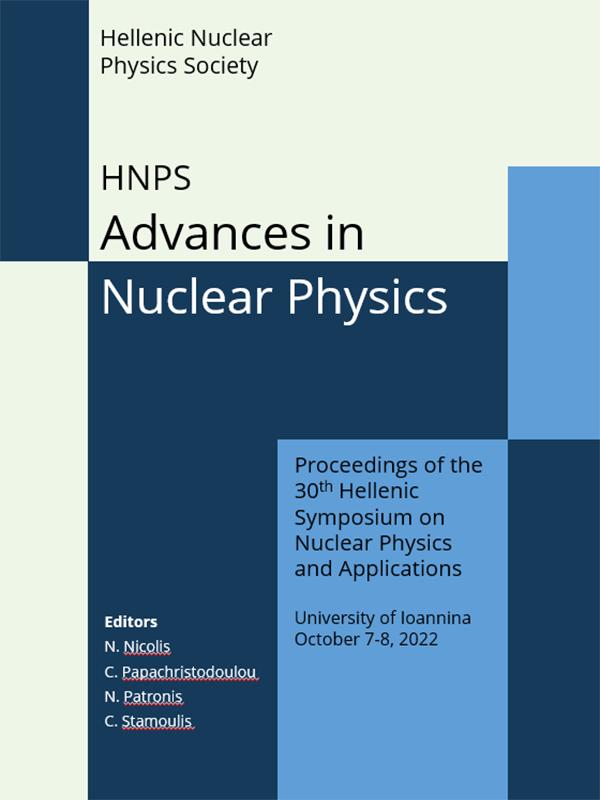Neutron Flux Determination for the NEAR Station at the CERN n_TOF Facility Using the SAND II Unfolding Code

Abstract
The NEAR station, a new experimental area of the n_TOF facility, was established after the second long shut down of CERN in 2020. This new area was created in order to exploit in situ the high instantaneous neutron flux (originating from proton spallation into a lead target in bunches with momenta reaching up to 20 GeV/c). The reason for the creation of the NEAR station is to utilize the neutrons for experiments related to radiation damage on materials and nuclear astrophysics and the corresponding neutron flux was characterized via extensive neutron multiple foil activation measurements. The irradiated foils were subsequently measured using high purity germanium detectors (HPGe) to determine their induced activities. Finally, the widely used SAND II unfolding code was implemented for the characterization of the neutron flux, using the evaluated cross sections from the IRDFF library, along with the experimentally derived activities. The preliminary results concerning the neutron flux determined in the present work are compared with the corresponding FLUKA simulated ones.
Article Details
- How to Cite
-
Frantzis, C., Vlastou, R., Kokkoris, M., Diakaki, M., Michalopoulou, V., Chasapoglou, S., Kopanos, S. A., Stoulos, S., & Koseoglou, P. (2023). Neutron Flux Determination for the NEAR Station at the CERN n_TOF Facility Using the SAND II Unfolding Code. HNPS Advances in Nuclear Physics, 29, 176–182. https://doi.org/10.12681/hnpsanp.5185
- Issue
- Vol. 29 (2023): HNPS2022
- Section
- Poster contributions

This work is licensed under a Creative Commons Attribution-NonCommercial-NoDerivatives 4.0 International License.





